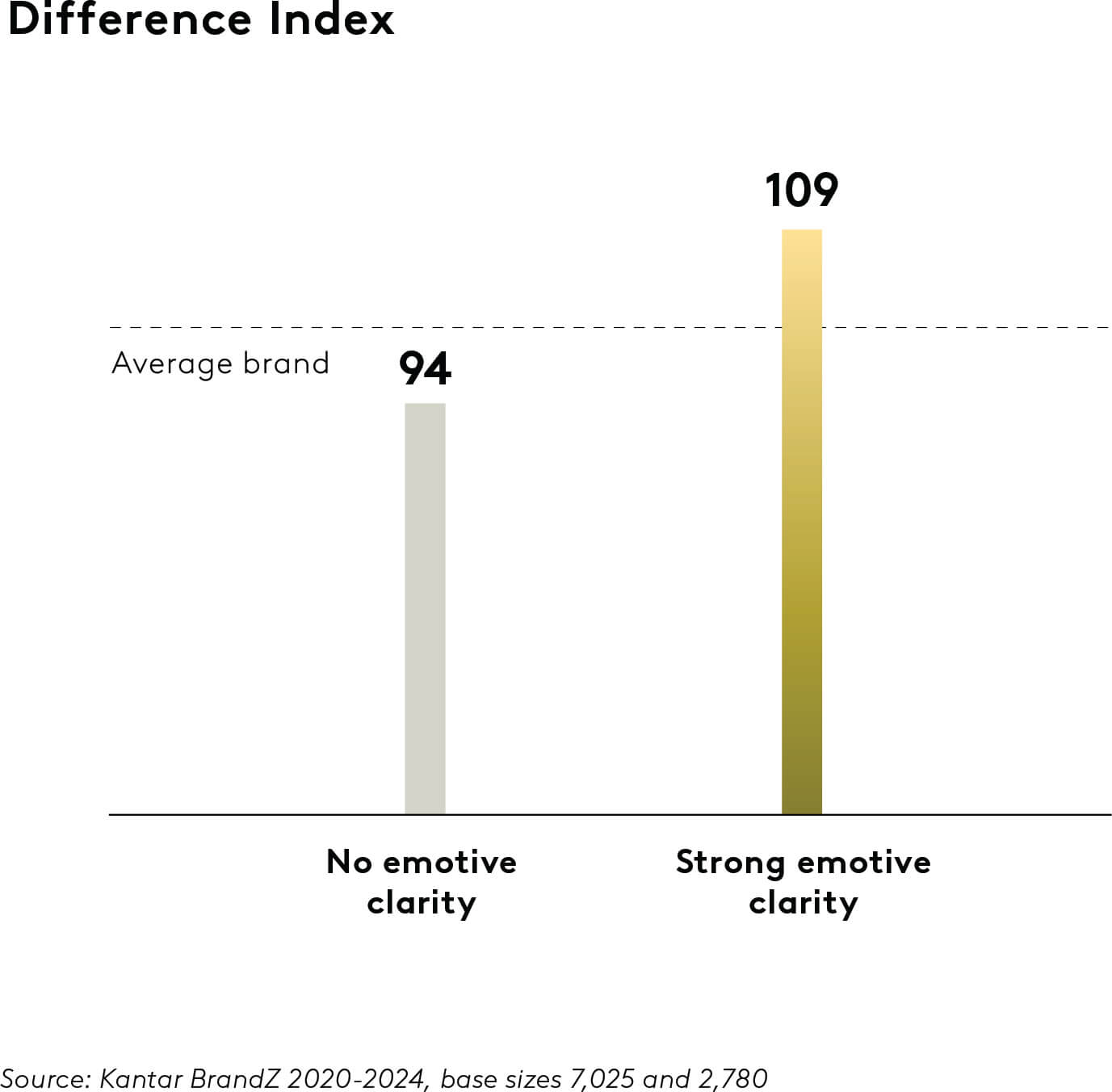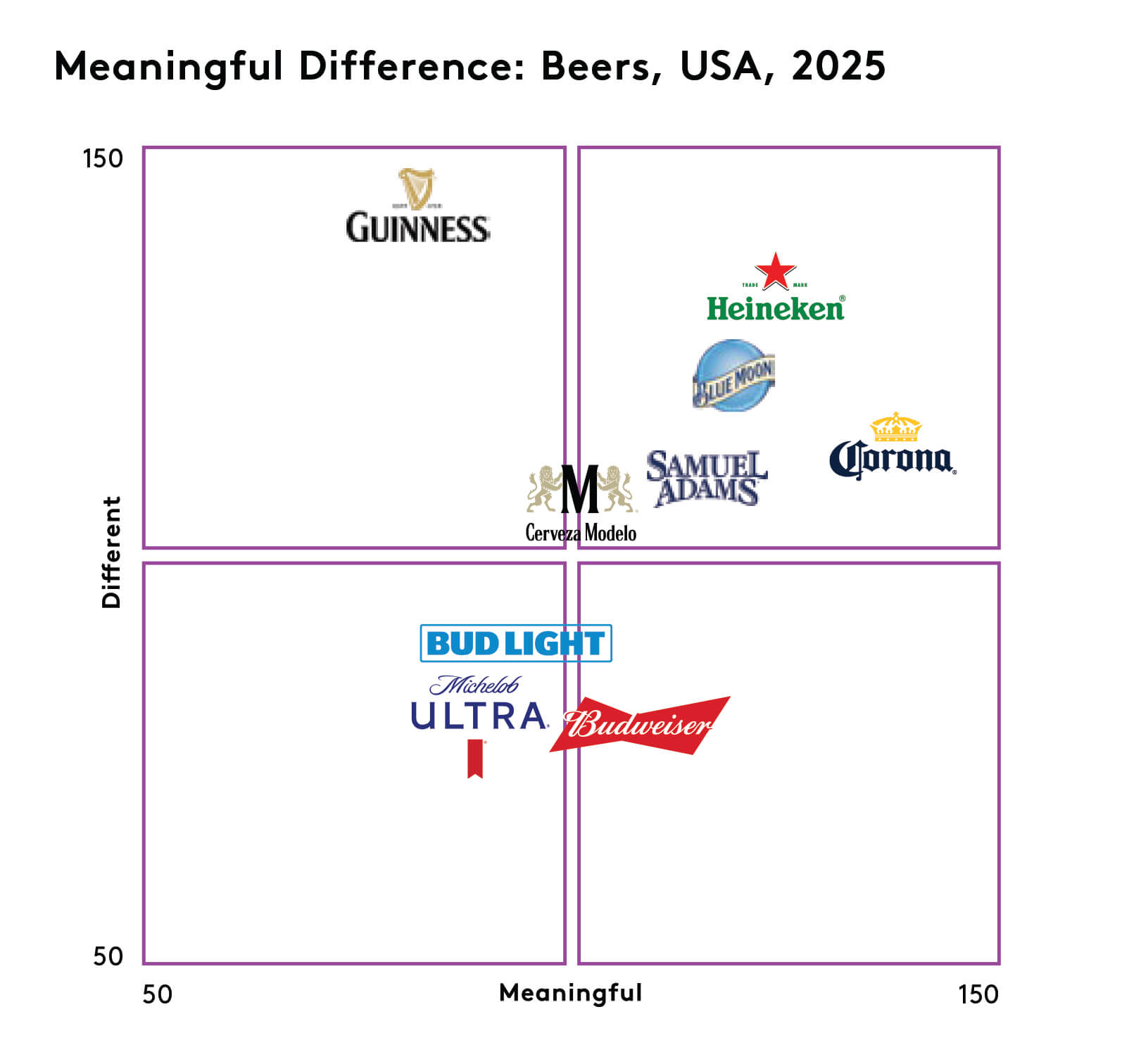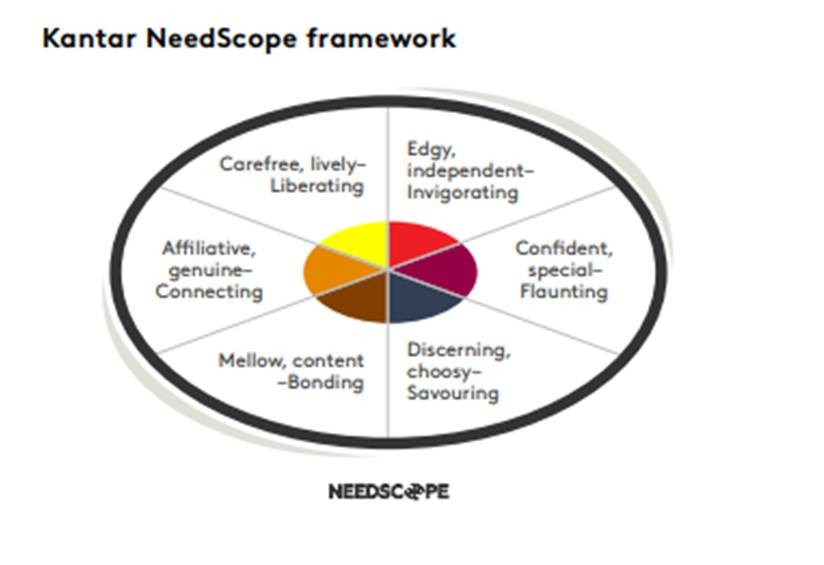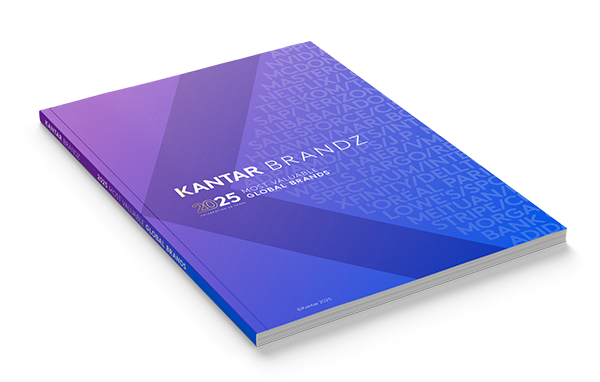But mainstream, market-leading brands can be different too. And not just when they’re tech innovators like Apple working to promote some new breakthrough innovation. Any leading brand can be different, and indeed, they generally are. By modelling Kantar’s BrandZ brand equity data alongside Kantar Worldpanel shopper behaviour, we know brands that are Meaningfully Different command five times the penetration of brands that aren’t.
But what actual steps can brands take to become more different – especially in categories where brands and product offerings are functionally similar? In these cases, meeting emotive needs can be a powerful way for brands to compete. Kantar BrandZ data also shows us that brands with strong emotive clarity are far more different than brands without emotive clarity.

Impact of emotive clarity on difference
Emotive clarity is a powerful long-term route. The benefits of emotive clarity become especially clear when we take a long-term view. Of the brands that ranked in Kantar BrandZ’s Global Top 100 in 2006, just over half remain on the list today. These brands have thrived. As a group, they are also twice as likely to have strong emotive clarity than the brands that dropped off.The beer brand Corona offers a strong example. It was featured in Kantar BrandZ’s 2006 ranking and remains there today. That is a remarkable achievement for a long-established brand, especially in a category where craft beers often command the limelight via product innovation and clever branding.

So, what can we learn from Corona? It is a mainstream brand. It is also Meaningfully Different.
And how does emotion fit into this? The answer lies in Kantar’s NeedScope framework (below). Taken together, its six segments encompass the range of emotive positionings available to beer brands.
This framework, built on universal human emotions, helps brands establish positioning territories that create differentiation. With beer, emotion is linked to how people want to feel in the moment – often in sociable moments. Different beer brands can, and should, tap into different emotional spaces.
Still, most mainstream beer brands tend to emphasise affiliation and bonding, aligning with the orange and brown spaces in the model. This is the ‘heartland’ of mainstream beer. Premium beer brands lean into confidence, found in the purple space. And craft beer brands tend to play to a more discerning, selective mindset, aligning with the blue.

I mentioned sociable moments. These are especially important for mainstream beer brands: they aim to function as a popular choice to bring people together. For this reason, you often see emotive themes of connection and liveliness in mainstream beer advertising. For example, this ad for Tsingtao.
It’s a clear, appealing message. But the challenge for beer brands is that there are so many players competing in the same emotional space – it gets crowded. What if, instead, a mainstream brand decided to build a differentiated brand positioning around one of the less occupied segments of the NeedScope model? This is precisely what Corona has done.
Corona has many well-known brand assets: its distinctive logo, its font type with the crown motif, its Mexican heritage, and its beach-oriented ads. Not to mention the ritual of its distinctive ‘lime slice’ serve, which adds a product cue to these key brand assets.
But what’s most important is the emotive positioning these assets create: not just a literal beach, but a symbolic beach of the mind. It’s a vibe that lends a carefree, vibrant, and laid-back air to any beer occasion.
Here are three steps marketers can take to build emotion into their brands:
01) Choose the right emotion for your brand
Simply expressed emotions should be at the core of your positioning. This provides the platform around which you can build a perceived Difference for your brand. As we’ve seen, Corona leans heavily on carefree, vibrant emotions, aligning with the yellow space in the NeedScope model. It makes sure these are captured through all its associations – and in doing so, sets itself apart from the typical stance of mainstream beer brands.
02) Ladder up the benefits
Emotion should link seamlessly across brand elements. Think of this like a benefits ladder in which multiple connection points build Difference and reinforce each other. With Corona as the example, you have:
- Product benefits: as a Mexican lager, Corona has a mild, but subtly distinctive taste. It’s refreshing and drinkable
- A clear bottle: putting the beer’s distinctive colour on display
- The lime wedge: a useful functional addition that brings a ‘zesty’ liveliness to each sip
- A ‘beach state of mind’ positioning: at the top of the benefits ladder, Corona is delivering all the emotions on which the brand is built
03) Execute consistently
Brand managers might get bored with their marketing, but there’s less evidence that consumers do. Kantar research shows that true creative quality ‘wear out’ is rare. So, if your creative performs well, keep using it. Its power derives from consistent application over time. Once again, Corona illustrates this. Their ad campaigns have stood the test of time to a remarkable extent.
Putting it together
Positioning is about making deliberate choices on where to build difference. Being different doesn’t always mean being new – it often means staying the same in a compelling way, reinforcing a consistent emotional message. Brands must evolve to stay relevant, but a strong and sustained emotional foundation is what builds lasting value.The 20th anniversary edition of Kantar BrandZ’s Most Valuable Global Brands rankings and report are now available at www.kantar.com/campaigns/brandz/global
For a quick read on a brand’s performance compared to competitors in a specific category, Kantar’s free interactive tool, BrandSnapshot powered by BrandZ, provides intelligence on 14,000 brands. Find out more here.




